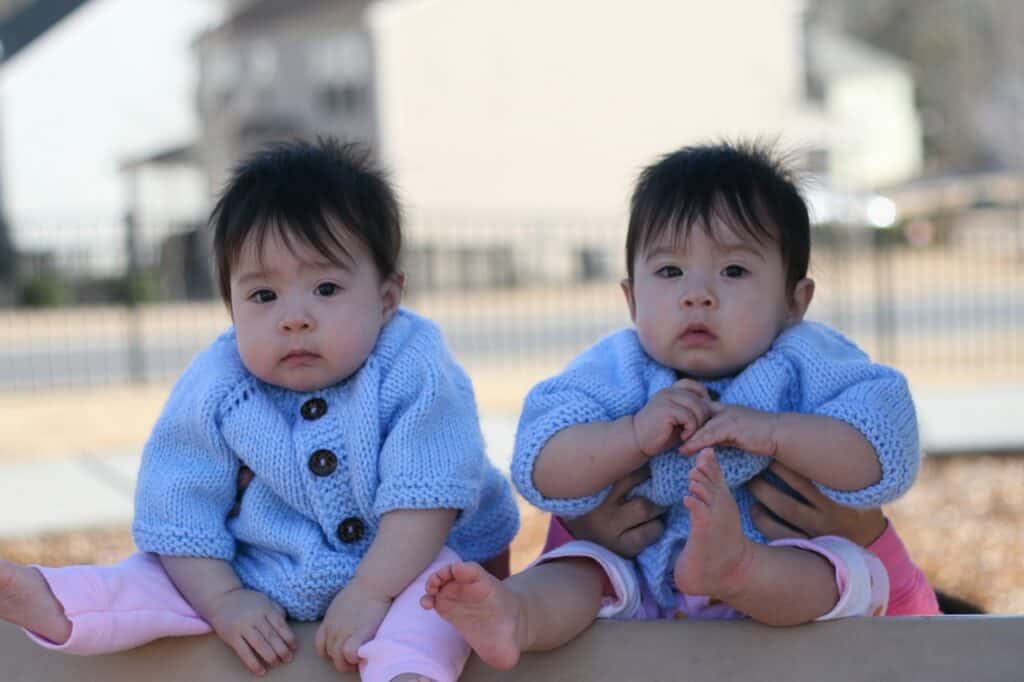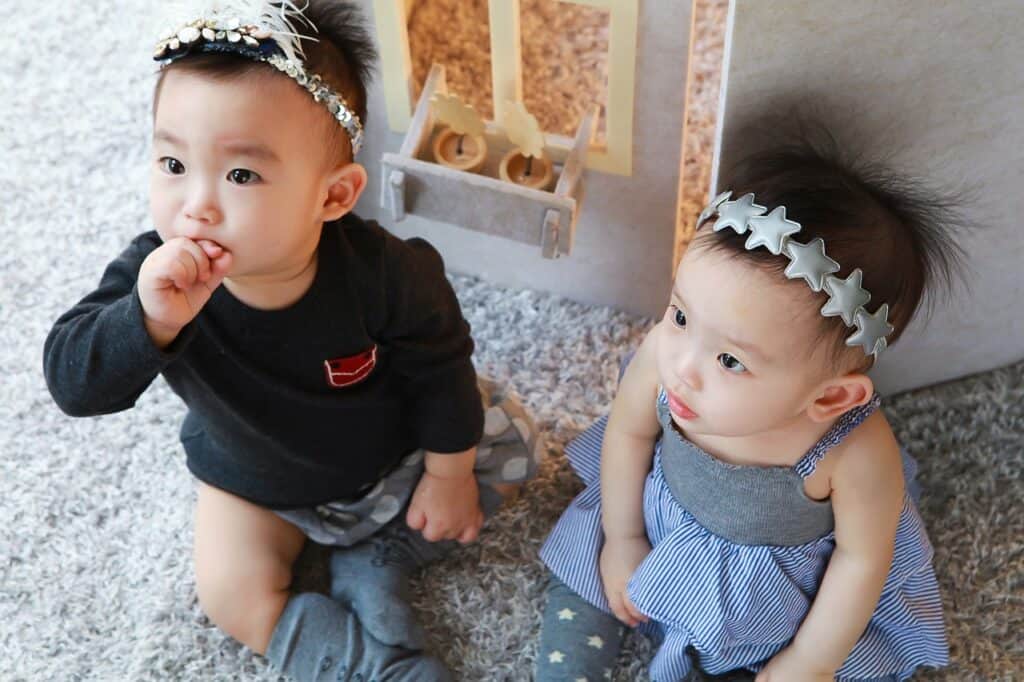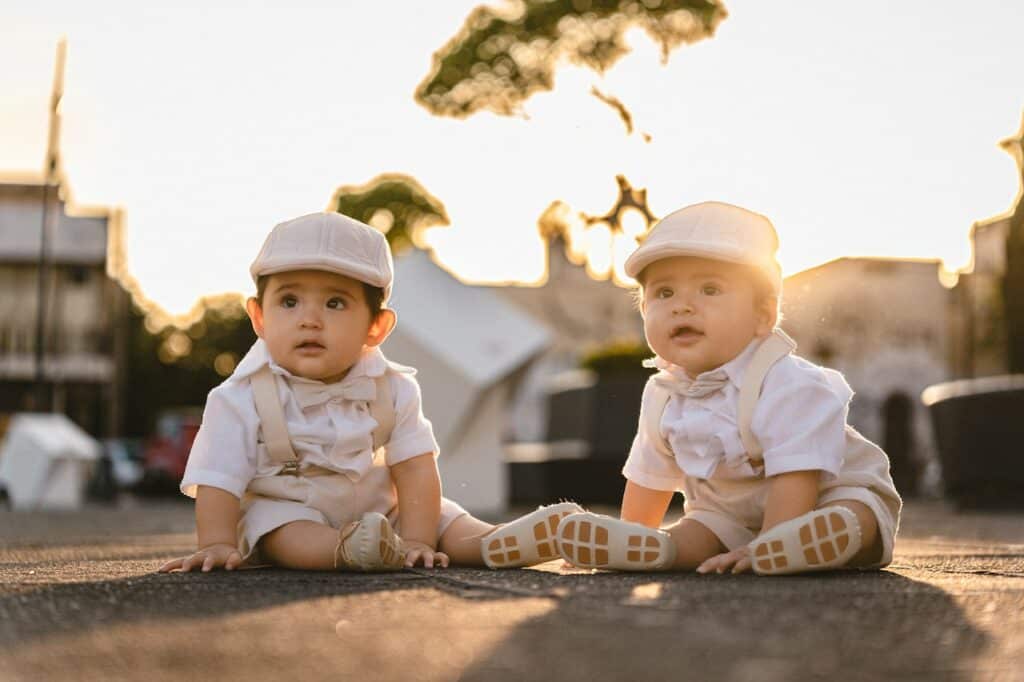Identical twins have always been a topic of fascination for researchers and the general public alike. One of the most intriguing aspects of identical twins is their physical similarities, including eye color. While it is commonly believed that identical twins have the same eye color, there have been cases where they have different eye colors. This article will explore the question of can identical twins have different eye colors and the factors that contribute to this phenomenon.
Understanding Identical Twins
Identical twins, also known as monozygotic twins, are formed when a single fertilized egg splits into two embryos. As a result, identical twins have the same genetic makeup, which means they share the same DNA. This makes them look very similar, and they often have the same eye color. However, there are some cases where identical twins have different eye colors, which raises the question of how this is possible.
Eye Color Determination
Eye color is determined by the amount and type of pigments in the iris, which is the colored part of the eye. The amount and type of pigments are determined by the genes inherited from the parents. There are two types of pigments that contribute to eye color: melanin and lipochrome. Melanin is responsible for brown, black, and hazel eyes, while lipochrome is responsible for green, blue, and gray eyes. The combination of these pigments and the genes that control them determine the eye color.
Understanding Identical Twins
Identical twins, also known as monozygotic twins, are formed when a single fertilized egg splits into two embryos. As a result, identical twins share 100% of their DNA and are genetically identical. This means that they have the same physical characteristics, including eye color, hair color, and skin tone.
However, in rare cases, identical twins can have different eye colors. This occurs when the genetic code for eye color is not fully expressed in both twins. Eye color is determined by multiple genes, and it is possible for one twin to inherit a different combination of genes than the other twin. This can result in one twin having brown eyes while the other twin has blue or green eyes.
It is important to note that this phenomenon is very rare and occurs in less than 1% of identical twin pairs. Additionally, it is important to understand that identical twins are formed from a single fertilized egg that splits into two embryos. This means that they are not formed from separate sperm cells like fraternal twins.
In conclusion, while identical twins share 100% of their DNA and are genetically identical, it is possible for them to have different eye colors due to variations in the expression of eye color genes.
Eye Color Determination

Eye color is determined by the amount and type of pigment in the front part of the iris, which is the colored part of the eye. The iris has two layers, the stroma and the epithelium. The stroma contains pigmented cells that produce melanin, which gives the iris its color. The epithelium is a thin layer of cells that covers the stroma.
The amount and type of melanin in the iris are determined by genes. The gene that controls the amount of melanin is called OCA2. The more melanin a person has in their iris, the darker their eye color will be. Brown eyes have more melanin than blue eyes, which is why they appear darker.
However, eye color is not solely determined by genetics. The environment can also play a role. For example, exposure to sunlight can cause the melanin in the iris to darken, which can change the appearance of eye color. Additionally, babies are often born with blue eyes that can change color as they grow older because the amount of melanin in their iris increases over time.
Identical twins have the same DNA, which means they have the same genes. However, it is possible for identical twins to have different eye colors. This is because the amount and type of melanin in the iris can be influenced by environmental factors, such as exposure to sunlight. Therefore, even though identical twins have the same genes, their eye color can still differ.
Differences in Identical Twins
Identical twins are known for their striking similarities, from their physical appearance to their genetic makeup. However, it is possible for identical twins to have differences in certain aspects, including their eye color.

Genetic Differences
Although identical twins share the same DNA, genetic mutations can occur during embryonic development that can lead to differences in eye color. This is because eye color is determined by multiple genes, and mutations in these genes can result in variations in pigment production and distribution.
One example of this is heterochromia, a condition where one eye has a different color than the other. This can occur in identical twins if a genetic mutation affects the production of pigment in one eye but not the other.
Environmental Influences
In addition to genetic differences, environmental factors can also play a role in differences in eye color between identical twins. For example, exposure to sunlight can cause changes in the amount and distribution of pigment in the iris, leading to variations in eye color.
Other factors that can influence eye color include freckles, birthmarks, and variations in skin color. These factors can affect the way light is absorbed and reflected by the iris, resulting in differences in the perceived color of the eyes.
Overall, while identical twins share many similarities, differences in eye color can occur due to a combination of genetic and environmental factors.
Other Factors Affecting Eye Color
While genetics plays a significant role in determining eye color, there are other factors that can affect the color of a person’s eyes. Some of these factors include age, parents, siblings, skin tone, personality, triplets, chorion, and being born with blue eyes.
As a person ages, the pigmentation in their eyes can change, causing a shift in eye color. This is especially true for babies, whose eye color can change several times before settling on a final color.
Parents can also influence the eye color of their children. While it’s not a guarantee, the eye color of a child is often similar to that of their parents. Siblings can also have different eye colors, even if they are identical twins. This is because the expression of genes can vary, resulting in different eye colors.
Skin tone can also affect eye color. People with darker skin tones tend to have darker eyes, while those with lighter skin tones often have lighter eyes. Personality traits, such as being more outgoing or introverted, have not been shown to have any correlation with eye color.
Triplets, or other multiple births, can also have different eye colors. This is because each fetus can develop independently, resulting in differences in eye color. Additionally, the chorion, or the membrane that surrounds the fetus, can affect eye color.
Finally, some babies are born with blue eyes, which can change to a different color as they age. This is because the pigment in their eyes has not yet fully developed.
In conclusion, while genetics is the primary determinant of eye color, there are other factors that can affect it. These factors should be taken into consideration when discussing the possibility of identical twins having different eye colors.
Also, read: Do Identical Twins Have the Same Blood Type
Identical vs Non-Identical Twins

Identical twins, also known as monozygotic twins, are created when a single fertilized egg splits into two embryos. This means that identical twins share the same DNA, and as a result, they often have similar physical characteristics, including eye color. In fact, it is extremely rare for identical twins to have different eye colors.
On the other hand, non-identical twins, also known as dizygotic twins, are created when two separate eggs are fertilized by two different sperm. This means that non-identical twins do not share the same DNA, and as a result, they can have different physical characteristics, including eye color.
It is important to note that while identical twins have the same DNA, environmental factors can still play a role in their physical appearance. For example, if one twin spends more time in the sun than the other, they may develop a slightly different skin tone or eye color.
It is also worth mentioning that there are other types of twins, such as mirror twins, who develop when a fertilized egg splits later than usual. Mirror twins have identical DNA, but they may have some physical differences, such as birthmarks or hair whorls, that are mirror images of each other.
Overall, while it is possible for non-identical twins to have different eye colors, it is extremely rare for identical twins to have different eye colors due to their identical DNA.
Unique Cases of Twins
While it is rare for identical twins to have different eye colors, there have been some unique cases that have been reported.

One such case is of a pair of identical twin sisters, one of whom had heterochromia iridum, a condition in which the iris of one eye is a different color than the other. The other sister had normal brown eyes. The odds of this happening are estimated to be around 1 in 1 million.
Another case is of a pair of identical twin brothers, one of whom had red hair and green eyes, while the other had brown hair and blue eyes. This is also a rare occurrence, as the gene for red hair is recessive and both parents must carry the gene for it to be expressed. The odds of this happening are estimated to be around 1 in 500,000.
It is important to note that these unique cases are still the result of random chance, as identical twins share the same DNA. However, differences in environmental factors or mutations during development can lead to variations in physical traits.
It is also worth mentioning that while identical twins may have different eye colors, their fingerprints will always be identical due to the way they form in the womb.
Related Posts:
Frequently Asked Questions
Can identical twins have different eye colors at birth?
It is extremely rare for identical twins to have different eye colors at birth, as they share the same genetic makeup. However, in very rare cases, identical twins may have slight differences in eye color due to genetic mutations.
Is it possible for identical twins to develop different eye colors over time?
Yes, it is possible for identical twins to develop different eye colors over time. This can happen due to environmental factors such as exposure to sunlight or certain medications, or due to genetic mutations that occur after birth.
Do identical twins always have the same eye color as adults?
No, identical twins do not always have the same eye color as adults. As they age, their eye color may change due to environmental factors or genetic mutations. However, it is still very rare for identical twins to have significantly different eye colors.
Can identical twins have different skin colors?
Yes, it is possible for identical twins to have different skin colors. This can happen due to differences in exposure to sunlight or other environmental factors, or due to genetic mutations that affect skin pigmentation.
Can identical twins have different hair colors?
Yes, identical twins can have different hair colors. This can happen due to differences in exposure to sunlight or other environmental factors, or due to genetic mutations that affect hair pigmentation.
Do identical twins always have the same physical features?
Identical twins share the same genetic makeup, but they may not always have the same physical features. Environmental factors such as nutrition, exercise, and exposure to sunlight can all affect physical development, as can genetic mutations that occur after birth. However, identical twins are generally very similar in appearance.

Iesha is a loving mother of 2 beautiful children. She’s an active parent who enjoys indoor and outdoor adventures with her family. Her mission is to share practical and realistic parenting advice to help the parenting community becoming stronger.
